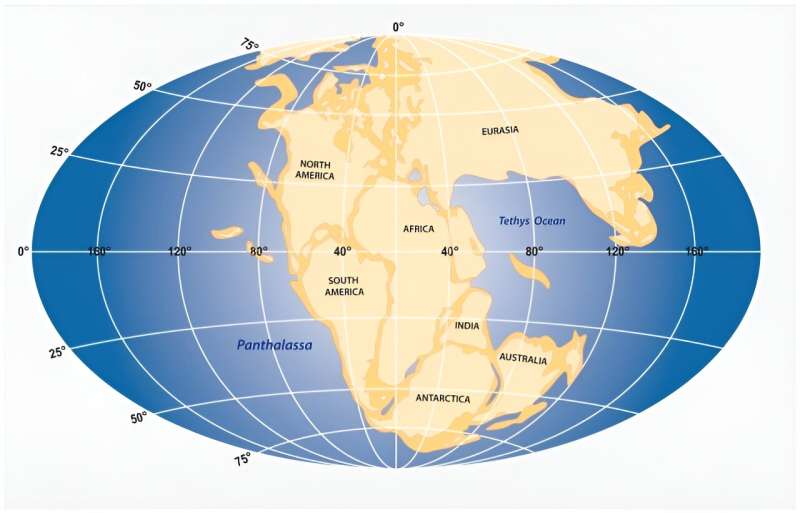This article has been reviewed according to Science X's editorial process and policies. Editors have highlighted the following attributes while ensuring the content's credibility:
fact-checked
peer-reviewed publication
trusted source
proofread
Study illuminates formation of US east coast during break up of supercontinent Pangea

A recent study published in the Journal of Geophysical Research: Solid Earth sheds new light on the formation of the East Coast of the United States—a "passive margin," in geologic terms—during the breakup of the supercontinent Pangea and the opening of the Atlantic Ocean around 230 million years ago.
In geology, passive margins are "quiet" areas, locations with minimal faulting or magmatism, where land meets the ocean. Understanding their formation is crucial for many reasons, including that they are stable regions where hydrocarbon resources are extracted and that their sedimentary archive preserves our planet's climate history as far back as millions of years.
The study, co-authored by scientists from the University of New Mexico, SMU seismologist Maria Beatrice Magnani, and scientists from Northern Arizona University and USC, explores the structure of rocks and the amount of magma-derived rocks along the East Coast and how they change along the margin, which may be tied to how the continent was pulled apart when Pangea fragmented. This event may have also influenced the structure of the Mid-Atlantic Ridge, a vast underwater mountain system running down the center of the Atlantic Ocean.
The study team analyzed rocks deep below the ocean floor, about 10 to 20 kilometers down, using special instruments called ocean-bottom seismometers. The instruments measure the sound speed of rocks beneath the surface, helping scientists figure out composition and rock type. This research is part of a considerable effort to investigate how continents break apart, one of the most important questions in the Earth Sciences.
"Passive margins define the majority of the Earth's coastlines and are home to much of the world's population," Magnani said. "They are vulnerable to changes driven by long-term climate variations and sea-level rise. Understanding their beginnings and the processes that shape them offers clues on how they can be affected by and respond to geohazards, including earthquakes, submarine landslides, and erosion."
More information: Collin C. Brandl et al, Discontinuous Igneous Addition Along the Eastern North American Margin Beneath the East Coast Magnetic Anomaly, Journal of Geophysical Research: Solid Earth (2023). DOI: 10.1029/2023JB026459
Journal information: Journal of Geophysical Research: Solid Earth
Provided by Southern Methodist University




















